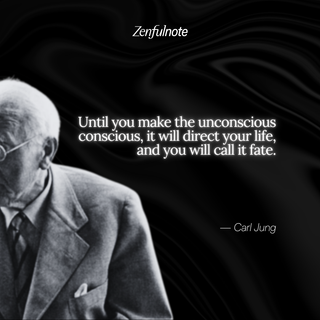The ego represents the conscious part of our personality, while the shadow encompasses everything the ego refuses to acknowledge or accept about ourselves. The shadow self harbors repressed memories, emotions, and facets of our personalities that we have denied and buried to conform to societal expectations.
Carl Jung was a pioneering figure in psychology and he coined the term “shadow self”. He had a profound interest in symbols and archetypes, which naturally led him to explore the world of tarot. Jung believed that tarot cards, like dreams and myths, are rich with archetypal imagery that can tap into the collective unconscious—a reservoir of shared human experiences and symbols. When you delve into the world of tarot, you can uncover and integrate your shadow self, those hidden or repressed parts of your psyche, to facilitate a journey of self-discovery and transformation.
Your shadows can manifest as fears, desires, or traits that you find uncomfortable to face. Tarot cards serve as a mirror to the unconscious mind, revealing these hidden facets and offering a pathway to self-awareness.
When engaging in tarot readings, you’re not really "predicting the future"- you're engaging in a dialogue with your inner self. And your inner-self has the power to dictate, initiate, and manifest your future experiences. Each card you draw reflects a part of your unconscious, helping you to identify and address your deepest fears, traumas, and desires. Through this process, you can bring light to the shadows, integrating them into your conscious awareness and fostering a sense of wholeness.
Archetypes in Tarot
Central to both Jungian psychology and tarot are archetypes, universal symbols that represent fundamental human experiences. Jung's archetypes, such as The Fool, The Magician, and The Empress, appear in tarot decks, each embodying different aspects of the human journey. Taking the time to recognize the archetypes currently influencing your life provides you with meaningful, inspirational frameworks and organizing principles. This process helps you connect with old wounds and other shadow material, encouraging you to see yourself as the protagonist in your own story. It allows you to understand that everything you do has a reason, even if it's unconscious or initially seems chaotic. Once you identify an active archetype within you, observing how you express it can reveal whether you need to adjust your life’s mission or approach.
"Archetypes are the living system of reactions and aptitudes that determine the individual's life in invisible ways." – Carl Jung
The Fool, for example, symbolizes new beginnings and the innocence of embarking on a new path, while The Magician represents the power of transformation and will. The Empress, is nurturing and abundant, connects us to the archetype of the Great Mother.
This understanding allows us to consciously engage with these aspects, transforming our relationship with them and allowing us to dissolve the (seemingly) negative archetypal energies that hinder us and foster a more empowering archetypal energy.
Carl Jung's theory of synchronicity, or meaningful coincidences, plays a significant role in tarot readings. Synchronicities are those moments when seemingly unrelated events align in a way that feels profoundly meaningful. In the context of tarot, synchronicities can manifest during readings, where the cards drawn seem to resonate perfectly with our current life situations.
You might draw The Tower card during a time of significant upheaval in your life, reflecting the sudden change and disruption you're experiencing. These coincidences aren't random; they're messages from the unconscious mind, guiding us toward greater understanding and insight. A wellspring of depth and wisdom resides in each of us, and we can really only tap into it through non-linear means; tarot is a great example of this.
These meaningful coincidences provide clues about our inner state, helping us to identify and confront the aspects of ourselves that need healing and integration–a primary goal in doing shadow work.
Combining tarot with complementary practices like meditation, therapy, and journaling can enhance your shadow work journey. Integrating these methods creates a holistic approach to self-discovery and provides you with multiple pathways to explore and integrate the shadow self. Below is a powerful example of how to work with archetypal tarot energies through the lens of shadow work affirmations. Next time you pull cards, enhance your tarot session by combining it with affirmations like these to deepen your self-awareness and healing process.
Affirmations for The Emperor (The Protector)
I am strong, capable, and in control of my destiny.
I build my life on a foundation of stability and strength.
Affirmations for The Fool (The Innocent)
I embrace new beginnings with an open heart.
I trust the journey, even when I cannot see the path.
Affirmations for The Magician (The Manifestor)
I have the power to create my reality.
I harness my inner resources to transform my life.
Affirmations for The Empress (The Nurturer)
I nurture myself with love and compassion.
I honor the creative force within me.
Affirmations for The Hermit (The Seeker)
I find wisdom in solitude and reflection.
I shine a light on the shadows within me to understand them.
Affirmations for Death (The Transformer)
I embrace transformation and release what no longer serves me.
I allow endings to create space for new beginnings.
Affirmations for The Tower (The Rebuilder)
I embrace upheaval as a catalyst for growth and renewal.
I rebuild my life with a stronger foundation.
Affirmations for The Star (The Inspirer)
I hold onto hope and trust in my path.
I am guided by my inner light and inspiration.
So, take the first step, pick up a deck of tarot cards, set an intention, and begin exploring the depths of your shadow self. The path to your hidden self awaits.


